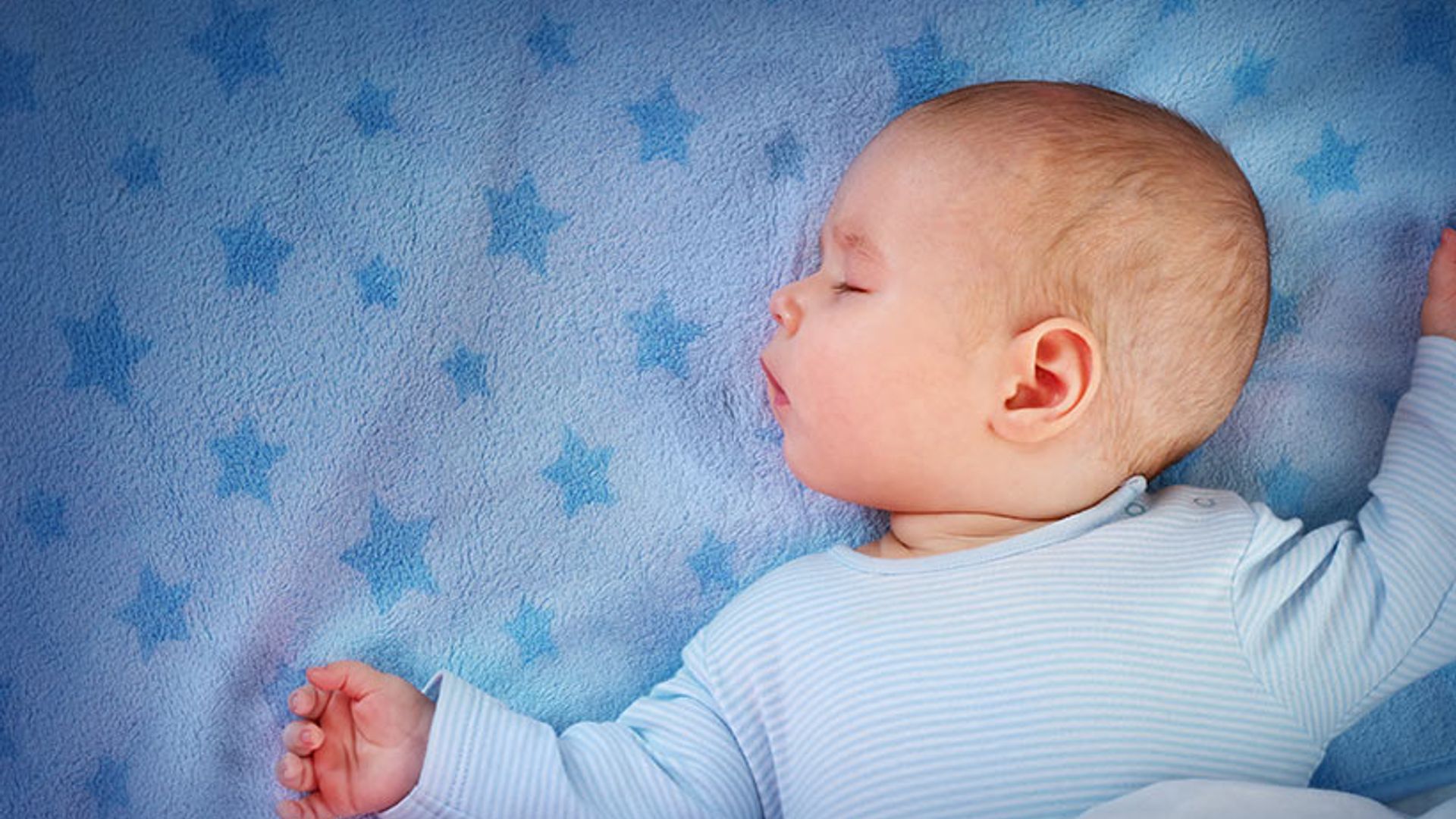Gina Ford's guides to parenting have become iconic, with millions of parents turning to her books to help them navigate through the first few months and years of their babies' lives. Kate Winslet is said to be a fan, while Jamie Oliver has previously admitted that wife Jools is a 'militant' follower of Gina's methods. "Gina's basically just a structured routine, and it's quite a lot to remember, but it does work," he told The Guardian.
Renowned for helping parents to get their babies to settle into a sleep pattern, Gina has teamed up with HELLO! online to help parents this New Year struggling with sleepless tots!
Gina has shared her guide to helping babies settle themselves to sleep
Gina says:
"With the festive season well behind us and a New Year ahead of us I have received an even higher number of requests this January for help from parents who are struggling to get their babies to self-settle. Some of these babies have never learned to self-settle and are totally dependent on being rocked or fed to sleep, whilst others who had been self-settling for weeks and often months, may have lost the ability the self-settle due to illness or hectic Christmas festivities. Teaching a young baby who has become dependent on being assisted to sleep is one of the most difficult challenges a parent can face, but using my ‘assisting to sleep method’ from The New Contented Little Baby Book will ensure that your baby learns how to self-settle with the minimum of fuss or crying.
"One caveat: I cannot stress strongly enough the importance of ensuring that you are following the routine suitable for your baby’s age. A baby who is not sleeping enough during the day can become over-tired in the evening and will then be difficult to settle. Equally, a baby who is sleeping too much during the day will also be difficult to settle in the evening. It is also important to look at your baby’s feeding to ensure that genuine hunger is not also contributing to your baby not settling or sleeping well. This is particularly so for babies between six and seven months who are being weaned. At this age, babies are only able to sleep nearer twelve hours if they are eating a reasonable amount of solids two to three times a day. A baby who is eating only two or three tablespoons of food a couple of times a day is unlikely to manage a twelve hour night with a milk feed.
The parenting guru revealed she's had a lot requests for help in the New Year
"Once you are confident that you are getting your baby’s daytime sleeping and feeding right, the following method will help comfort and reassure your baby whilst also teaching him how to self-settle:
"Once you have ruled out genuine hunger as a cause, and are ensuring that your baby is well fed, I would advise that you try a solution that I call the ‘assisting to sleep method’. The aim of this method is to get your baby used to sleeping at regular times during naps and in the evening, which will help him to sleep through the night as soon as he is physically able. After genuine hunger and the wrong sleep associations, I find that too much daytime sleep is the most common reason why a baby does not settle in the evening, or wakes frequently during the night. When this happens a vicious circle soon emerges where the baby needs to sleep more during the day because they are not sleeping well at night.
"In my experience, the only way to reverse this with young babies is to assist them to sleep at the times you want them to sleep. Once their sleep improves in the night, a baby becomes much easier to keep awake during the day, which in turn has a knock-on effect on them sleeping better in the evening and at night. The aim of the assisting to sleep method is to get your baby used to sleeping at regular times during naps and in the evening. Once your baby is used to sleeping at the same times for several days, you should find that you can settle him in his bed with the minimum of fuss.
"For this method to work it is important that it is done consistently and by only one parent. During stage one of the method, and for at least three days, do not attempt to put your baby in his bed at nap times or early evening. Instead, one parent should lie in a quiet room with him and cuddle him throughout the whole of the sleep-time.
Gina suggests the 'assisting to sleep' method
"Try to ensure that he is held in the crook of your arm, rather than lying across your chest. If he is older than two months and is no longer swaddled, it may help to use your right hand to hold both his hands across his chest; in this way, he will not wave his arms around and risk getting upset. It is important that the same person is with him during the allocated sleep time, and that you do not hand him back and forth, or walk from room to room. Once he is sleeping soundly for three days in a row at the recommended times, you should then progress onto the second stage and try to settle him in his bed. It is important to sit right next to his bed, so you can hold his hands across his chest and comfort him.
"On the fourth night, hold both his hands until he is asleep, and on the fifth night hold only one of his hands across his chest until he is asleep. By the sixth night you should find that you can put him down sleepy but awake in his bed, checking him every two or three minutes until he falls asleep. Do not try to settle him in his bed unless he has been sleeping soundly in your arms for at least three nights. Some babies may take longer than three days to sleep consistently at the recommended times.
"When he reaches stage two, where he is settling within 10 minutes for several nights, you should try leaving him to self-settle using the crying down method. It is important to understand that crying down is not the same as controlled crying. Crying down usually lasts around five to ten minutes at which point it will turn into fussing before he drifts off to sleep. It will also help with the self-settling if your baby gets used to being happy in his bed if you put him in it for short spells during the day, when he is fully awake, with a small book or toy to look at, whilst you stay close by, talking and reassuring him.
"When using the assisting to sleep plan, for the lunchtime nap, if you prefer, you can take your baby out for a nap in his pram or buggy. The important thing is to try to be consistent; the lunchtime nap should be in the buggy or in the house, but do not switch from one to the other midway through the nap. The assisting to sleep plan requires a lot of patience to stay very still and quiet with your baby for several nights, but with determination and perseverance it will help teach your baby to self-settle without him or you having to endure hours of distressed crying."












